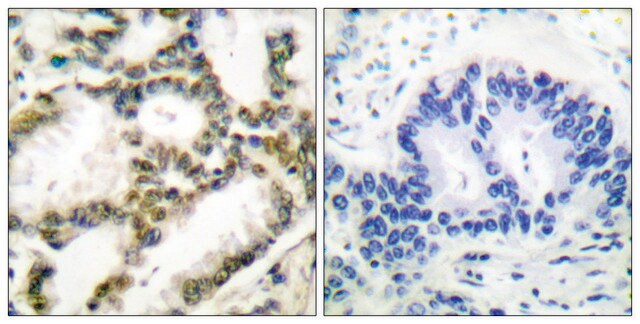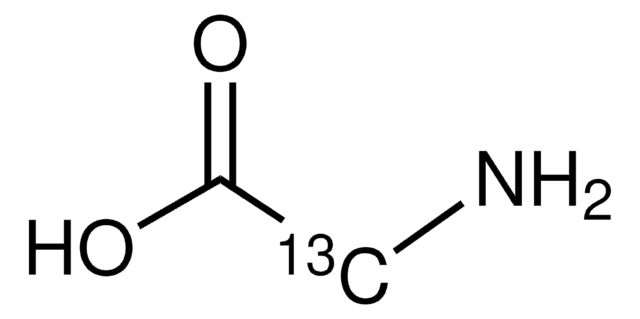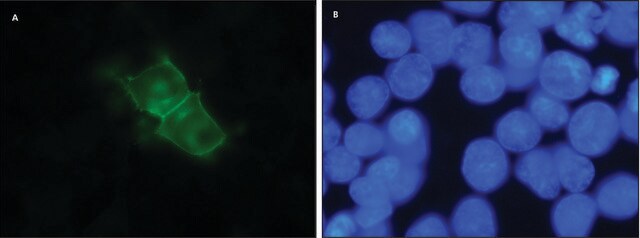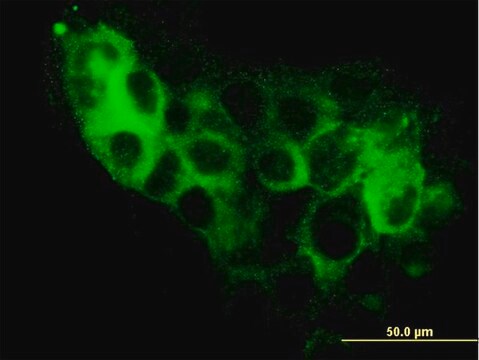06-238
Anti-Gβ Antibody
serum, Upstate®
Synonym(s):
Anti-HG2C1, Anti-NEDHYDF, Anti-SSS4
Sign Into View Organizational & Contract Pricing
All Photos(1)
About This Item
UNSPSC Code:
12352203
eCl@ss:
32160702
NACRES:
NA.41
clone:
polyclonal
application:
IP
WB
WB
species reactivity:
mouse, human
technique(s):
immunoprecipitation (IP): suitable
western blot: suitable
western blot: suitable
citations:
13
Recommended Products
biological source
rabbit
Quality Level
antibody form
serum
clone
polyclonal
species reactivity
mouse, human
manufacturer/tradename
Upstate®
technique(s)
immunoprecipitation (IP): suitable
western blot: suitable
isotype
IgG
NCBI accession no.
UniProt accession no.
shipped in
dry ice
target post-translational modification
unmodified
Gene Information
human ... GNB2(2783)
Specificity
Gβ subunits; recognizes both isoforms
Immunogen
Internal sequence of G-protein β subunit (KTREGNVRVSREL) conjugated to octavalent polylysine base
Application
Detect Gβ using this Anti-Gβ Antibody validated for use in IP & WB.
Quality
Immunoblot Analysis: A 1:500-1:1000 dilution of this antibody detected the Gβ subunits in 20 μg of a cell lysate prepared from rat brain microsomal preparation (Catalog # 12-144).
Immunoprecipitation/Immunoblot: 10 μl of this antibody immunoprecipitated the Gβ subunit from 500 μg-1mg of a lysate of rat brain microsomal preparation (Catalog # 12-144).
Immunoprecipitation/Immunoblot: 10 μl of this antibody immunoprecipitated the Gβ subunit from 500 μg-1mg of a lysate of rat brain microsomal preparation (Catalog # 12-144).
Target description
35/36kDa
Physical form
PBS, pH 7.2
Legal Information
UPSTATE is a registered trademark of Merck KGaA, Darmstadt, Germany
Storage Class Code
10 - Combustible liquids
WGK
WGK 2
Certificates of Analysis (COA)
Search for Certificates of Analysis (COA) by entering the products Lot/Batch Number. Lot and Batch Numbers can be found on a product’s label following the words ‘Lot’ or ‘Batch’.
Already Own This Product?
Find documentation for the products that you have recently purchased in the Document Library.
Importance of the G protein gamma subunit in activating G protein-coupled inward rectifier K(+) channels.
T Kawano, L Chen, S Y Watanabe, J Yamauchi, Y Kaziro, Y Nakajima, S Nakajima, H Itoh
Febs Letters null
M C Galas et al.
The Journal of biological chemistry, 272(5), 2788-2793 (1997-01-31)
The ADP-ribosylation factor (ARF) GTP-binding proteins are believed to function as regulators of vesicular budding and fusion along the secretory pathway. To investigate the role of ARF in regulated exocytosis, we have examined its intracellular distribution in cultured chromaffin cells
H I Krieger-Brauer et al.
The Journal of biological chemistry, 272(15), 10135-10143 (1997-04-11)
Human fat cells possess a multireceptor-linked H2O2-generating system that is activated by insulin. Previous studies revealed that manganese was the sole cofactor required for a hormonal regulation of NADPH-dependent H2O2 generation in vitro. In this report it is shown that
J Yamauchi et al.
The Journal of biological chemistry, 272(44), 27771-27777 (1997-11-05)
Various extracellular stimuli activate three classes of mitogen-activated protein kinases (MAPKs): extracellular signal-regulated kinase, c-Jun N-terminal kinase, and p38 MAPK. In mammalian cells, p38 MAPK is activated by endotoxins, inflammatory cytokines, and environmental stresses. We show here that p38 MAPK
J Yamauchi et al.
The Journal of biological chemistry, 274(4), 1957-1965 (1999-01-16)
Heterotrimeric G protein beta gamma subunit (Gbeta gamma) mediates signals to two types of stress-activated protein kinases, c-Jun NH2-terminal kinase (JNK) and p38 mitogen-activated protein kinase, in mammalian cells. To investigate the signaling mechanism whereby Gbeta gamma regulates the activity
Our team of scientists has experience in all areas of research including Life Science, Material Science, Chemical Synthesis, Chromatography, Analytical and many others.
Contact Technical Service






